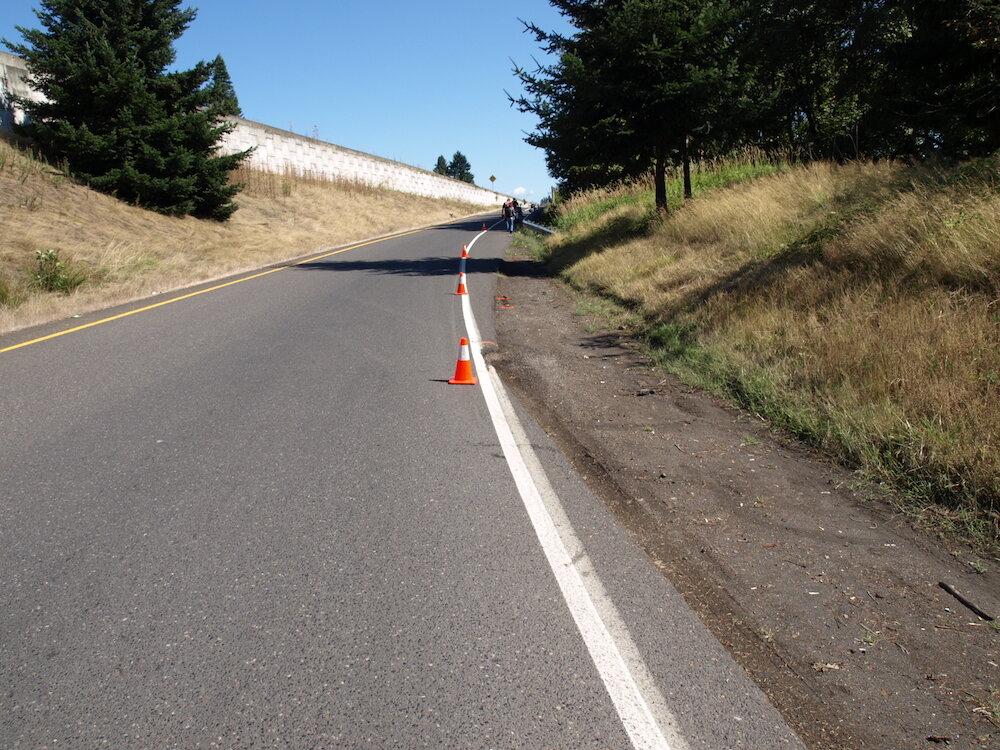Todd Moothart, a 50-year-old software development engineer, was on a motorcycle ride with two friends on a beautiful Saturday afternoon in September 2013. Their plan was to head east on State Route 14 to a viewpoint overlooking the Klickitat River. When Moothart and another rider got separated from the third motorcyclist by a traffic light, Moothart decided to pull off onto the shoulder of an on-ramp for SR 14 to stop and wait for the third motorcyclist to catch up. It is safer for motorcyclists to ride together as a group because they have a more visible presence on the road.
When Moothart pulled off onto the shoulder, he encountered a seven-inch deep pavement edge drop-off at the fog line. A seven-inch-deep piece of pavement jutted out from the edge of the pavement just beyond the drop-off. When Moothart’s Harley Davidson motorcycle hit the face of the broken pavement, his front and rear wheels were severely dented, and he was launched into the air like he was on a trampoline.
Safety standards in the transportation engineering field recommend that pavement edge drop-offs be kept to a depth of no greater than two inches. The Washington Department of Transportation (WSDOT) striping truck had came upon the pavement edge pothole and had painted the white fog stripe around it. In other words, WSDOT clearly acknowledging the hazard but did not report or repair it.
Moothart and his passenger were both ejected from the motorcycle. Moothart suffered multiple injuries, including a kidney laceration, numerous broken ribs, collapsed lungs, pulmonary contusions, a concussion, broken bones in both forearms, amputation of the top joint of his right index finger, and fractures to bones in his right pelvic ring. He was placed on a mechanical ventilator for eight days and required several surgeries.
Moothart spent 21 days in the hospital, followed by 55 days in a nursing home. He was then cared for by his mother and sister in Iowa for two months before he returned to Vancouver and resumed working part-time.
The design plans for the on-ramp called for an eight-foot paved shoulder on the right-hand side. At the location where Moothart pulled off, there was no paved shoulder at all beyond the fog line. For unknown reasons, the State’s as-built plans for the on-ramp showed an eight-foot paved shoulder, but the evidence indicated that the on-ramp never had an eight-foot paved shoulder in the area where Moothart pulled off. The on-ramp was built in the mid-’90s.
The Honorable Mary Sue Wilson granted judgment as a matter of law on the State’s negligence based on the State’s failure to provide an eight-foot paved shoulder as required by the design plans. The jury also found that the State failed to maintain the on-ramp in a reasonably safe condition for ordinary travel.
Moothart has chronic pain due to myofascial injuries and nerve damage but is able to work full time. He has ongoing disabilities related to the loss of the top joint of his right index finger, myofascial damage in his forearms, and chronic pain. He no longer rides motorcycles because the crash took the enjoyment out of riding for him. He had been a motorcycle enthusiast for over 30 years.
The jurors’ post-trial message to WSDOT was that it needed to develop a clear policy for identifying, reporting and promptly repairing pavement edge drop-offs so that others will not have to suffer serious injuries the way Mr. Moothart did.



